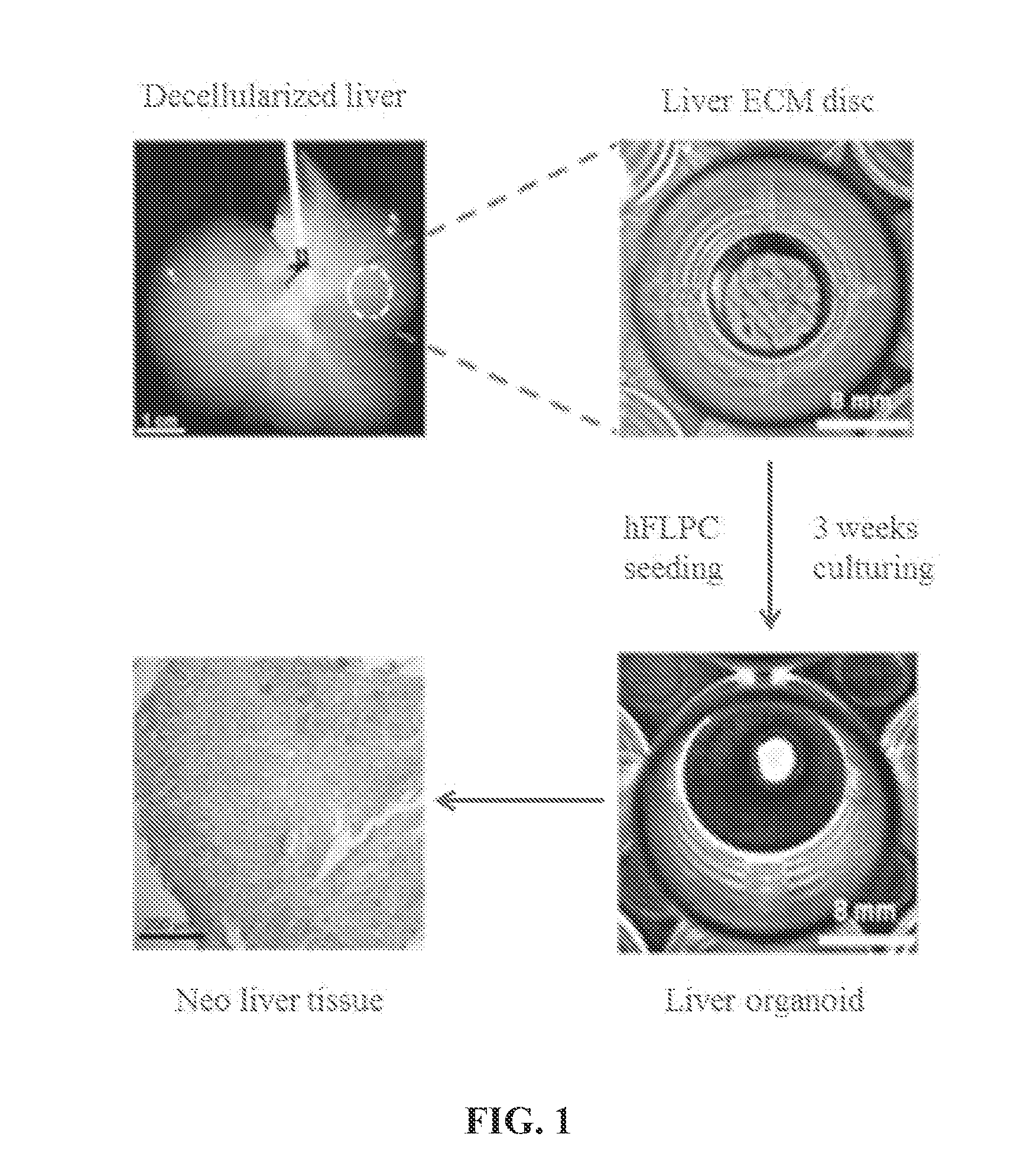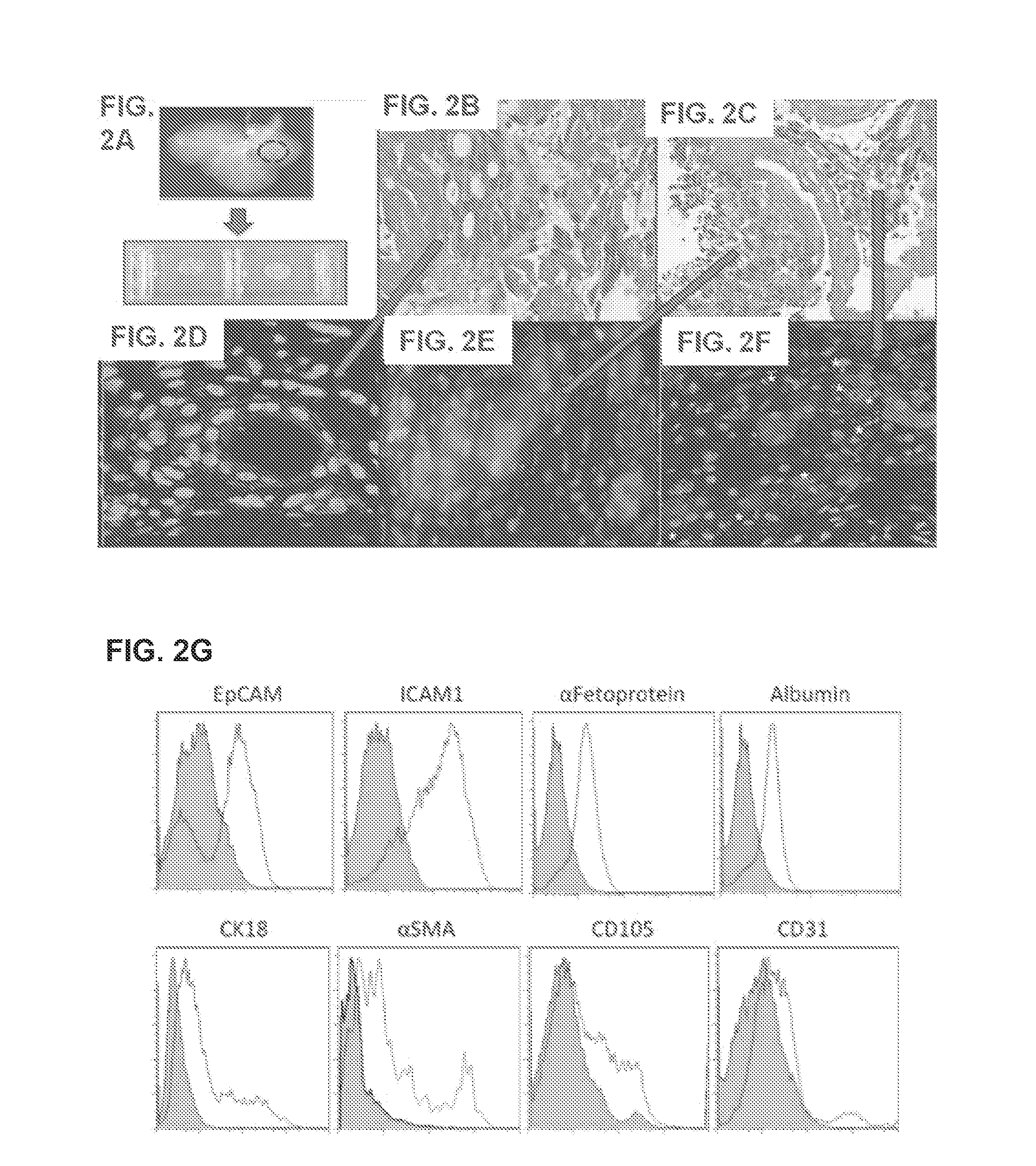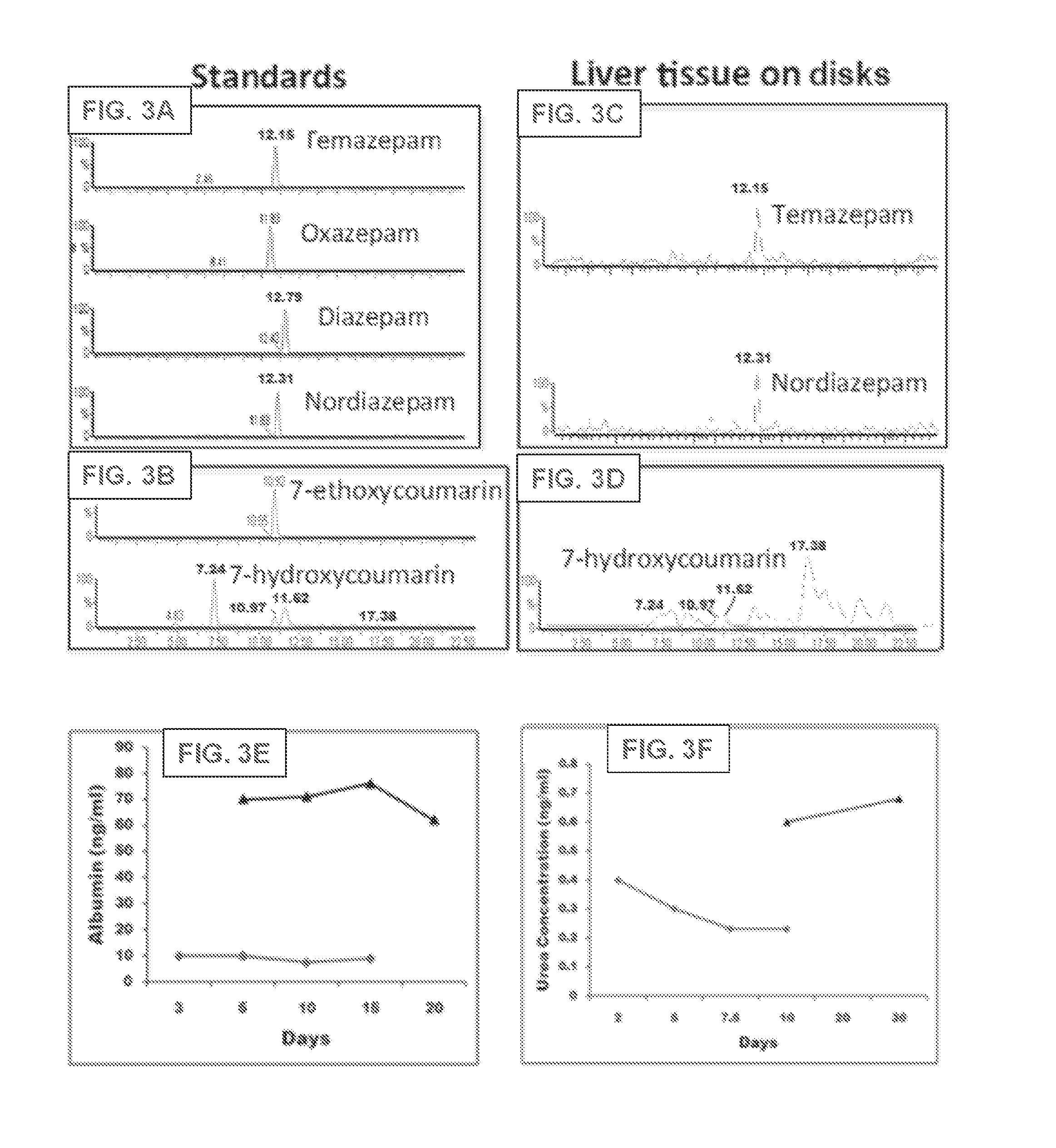Bioengineered Liver Constructs And Methods Relating Thereto
a liver and construct technology, applied in the field of bioengineered liver constructs, can solve the problems of limiting the application of human liver models to post-transplantation, model based on human tissue development, physiologic processes observed in the human body,
- Summary
- Abstract
- Description
- Claims
- Application Information
AI Technical Summary
Benefits of technology
Problems solved by technology
Method used
Image
Examples
example 1
Preparation and Characterization of Bioengineered Liver Organoids
[0097]A. Preparation of Liver Organoids
[0098]Liver Harvesting and Decellularization.
[0099]Four to five weeks old ferret livers (Marshall Bioresources, New York) are utilized for decellularization and disc preparation. Alternatively, human, rodent (e.g., rat, mouse), pig, monkey, ape, bovine and sheep livers can be used. Livers are harvested with intact vessels and the portal vein was cannulated with a 16-gauge cannulae (Cathlon® Clear, Johnson & Johnson Medical Ltd., Arlington, Tex., USA). The livers are then connected to a pump (Masterflex L / S peristaltic pump with Masterflex L / S easy load pump head and L / S 14 gauge tubing, Cole-Palmer, Vernon Hills, Ill., USA) and perfused with 2 liters of distilled water at the rate of 6 mL / min. The livers are then perfused with 4 liters of detergent made up of 1% Triton-X 100 (Sigma-Aldrich Co., St. Louis, Mo., USA) with 0.1% Ammonium hydroxide (Sigma-Aldrich Co., St. Louis, Mo., U...
example 2
Fetal Liver Organoids for Hematopoietic Cell Culturing
[0125]A. Preparation of Fetal Liver Organoids and Culturing of HSPCs
[0126]Liver Organoid Preparation.
[0127]The liver organoid system can be modified to support the maintenance and expansion of HSPC. Fetal livers are harvested, decellularized, acellular ECM discs are prepared, and enriched hFLPCs are isolated as described above in Example 1 with the following modifications. Sterilized discs were incubated with KM medium for 30-45 minutes prior to cell seeding and then air dried in biosafety cabinet. hFLPCs were re-suspended in hFLP medium, and each disc was seeded with 0.5×106 hFLPCs in hFLP medium. Alternatively, the hFLPCs can be resuspended in Kubota's Media (KM) and seeded in minimal LPC medium. These seeded discs were then allowed to mature for ˜5 days at 37° C. to allow the formation of functional liver organoids. The culture medium is changed every 24 hours.
[0128]HSPC Preparation from Cord Blood.
[0129]Cord blood (CB) units ...
example 3
Evaluating Signaling of Cell-Fate Determining Microenvironments for Hematopoietic Cells
[0150]The availability of decellularized liver scaffolds and the ability to selectively repopulate these scaffolds with specific cell populations enables systematic study of the role each niche cell type plays in CB-HSPC fate determination. These studies will allow optimization of conditions that favor either HSC expansion or HSC differentiation. Liver organoids will be prepared as described in Example 2, Section A and B, using long term HSC medium and including any modifications deemed appropriate based on Example 2, Section C and cultured with CD34+ HSPC prepared as described in Example 2, Section A. A control group of empty scaffolds (no cells) will be included to account for the effect of the ECM alone. The ECM is now appreciated to be a key regulator of cell and tissue behavior, by virtue of its ability both to arrange cells in a highly ordered 3-D array, and to serve as a reservoir of growth...
PUM
| Property | Measurement | Unit |
|---|---|---|
| diameter | aaaaa | aaaaa |
| diameter | aaaaa | aaaaa |
| temperatures | aaaaa | aaaaa |
Abstract
Description
Claims
Application Information
 Login to View More
Login to View More - R&D
- Intellectual Property
- Life Sciences
- Materials
- Tech Scout
- Unparalleled Data Quality
- Higher Quality Content
- 60% Fewer Hallucinations
Browse by: Latest US Patents, China's latest patents, Technical Efficacy Thesaurus, Application Domain, Technology Topic, Popular Technical Reports.
© 2025 PatSnap. All rights reserved.Legal|Privacy policy|Modern Slavery Act Transparency Statement|Sitemap|About US| Contact US: help@patsnap.com



